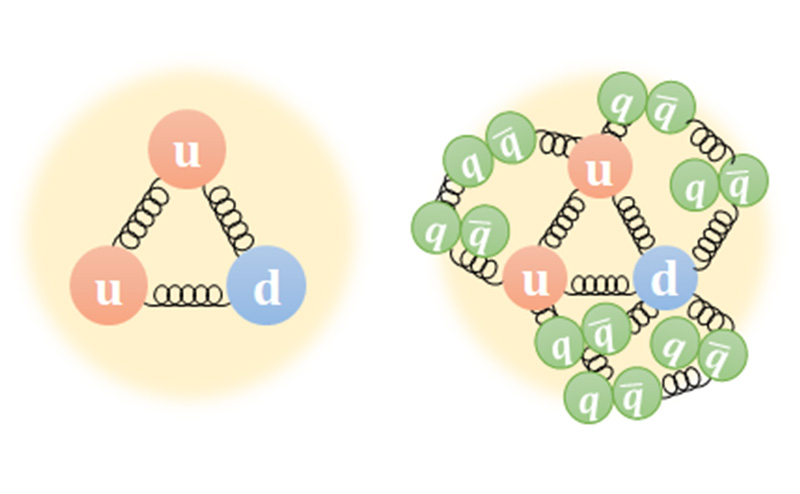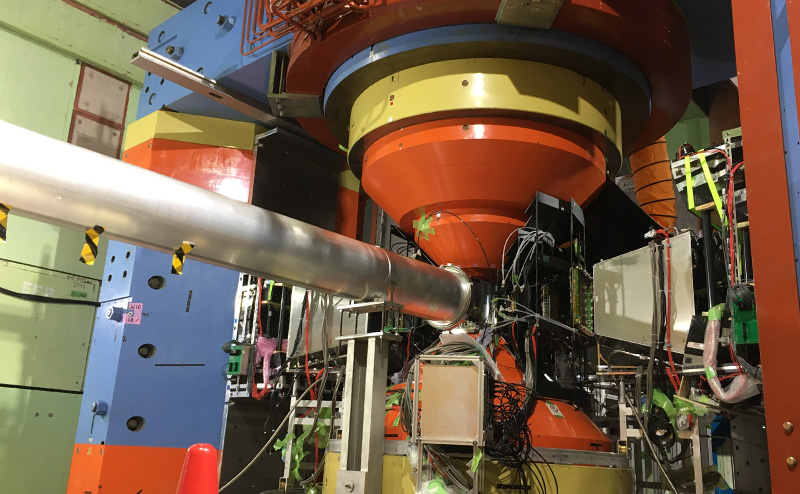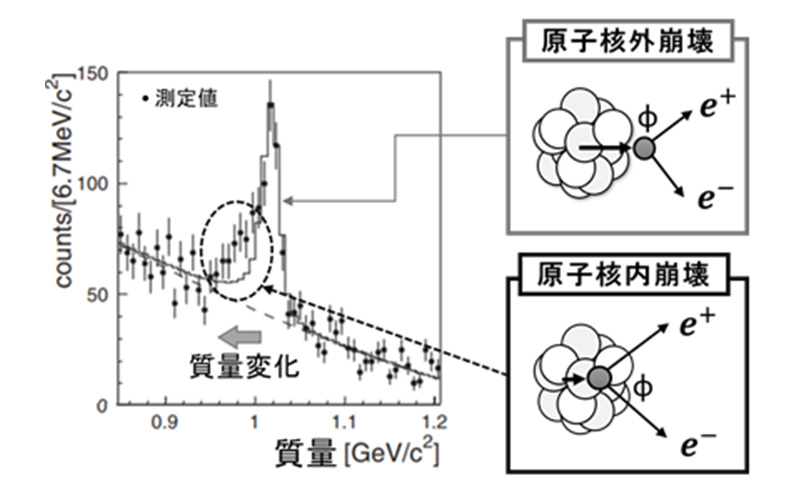Where does mass come from? We are conducting experiments to clarify the mechanism to generate mass of matter, in particular the hadron.
Hadron is a composite particle which is made of several quarks. The most familiar hadrons might be proton and/or neutron, responsible for most of the mass of the matter on the earth. It is widely accepted that the Higgs boson, discovered in July 2012 at CERN, gives the mass of elementary particles. However, Higgs mechanism explains only a few percent of the mass of hadron, and it is still open how hadron acquires its mass. For example, the proton mass is 938 MeV/c^2, whereas the bare mass of light quark (up/down quark) is only a few MeV/c^2.
How can we explain about such a large mass of hadron? As an explanation for origin of the hadron mass, the theory of “spontaneous breaking of chiral symmetry” formulated by Yoichiro Nambu in 1961 (Nobel prize in Physics, 2008). According to this theory, the breaking of chiral symmetry induces condensation of the quark-antiquark pair and hadron emerges as an excited state of QCD vacuum (Figure 1).
The condensation of the quark-antiquark pair is an important physical quantity that characterizes spontaneous breaking of chiral symmetry, but it cannot be directly measured directly at laboratory. However, under the condition of high temperature and/or high density like the early universe, it is predicted that the amount of quark condensation decreases due to the recovery of the chiral symmetry (Figure 2).
Measurements of the hadron mass in various conditions is a key to clarify the contribution of quark condensation for the mass. In the J-PARC E16 experiment, we aim to verify the theory which relates quark condensation to the mass of the hadron, by measuring hadron mass inside a nucleus.
The experiments are performed at J-PARC (Japan Proton Accelerator Research Complex), Tokai village, Ibaraki prefecture, Japan. The new beamline named as “high momentum proton beamline (high-p)” is constructed in spring 2020 and provides primary protons into the experimental area.
We measure the mass of phi meson produced in pA reactions using electron pairs (dileptons), which are not affected by the strong interaction. The phi meson is sensitive for the mass-modification since because its decay width (4 MeV/c^2) is sufficiently narrow compared to its mass (1020 MeV/c^2).
Unfortunately, the branching ratio of dilepton decay of phi meson is very small (10^-4), which makes difficult to acquire enough statistics. By using the high intensity proton beamline and the spectrometer with high rate capability which surrounds large solid angles, we plan to accumulate the enormous statistics.
In spring 2020, the construction of almost all the detectors has been completed. The E16 experiment is now about to acquire physical data. And this important experiment leads future experiments in the high-p beamline.
-

Fig. 1: Conceptual diagram of mass generation in hadrons
-

Fig. 2: Density and temperature dependence of quark condensation
-

Fig. 3: Photo of spectrometer for E16
-

